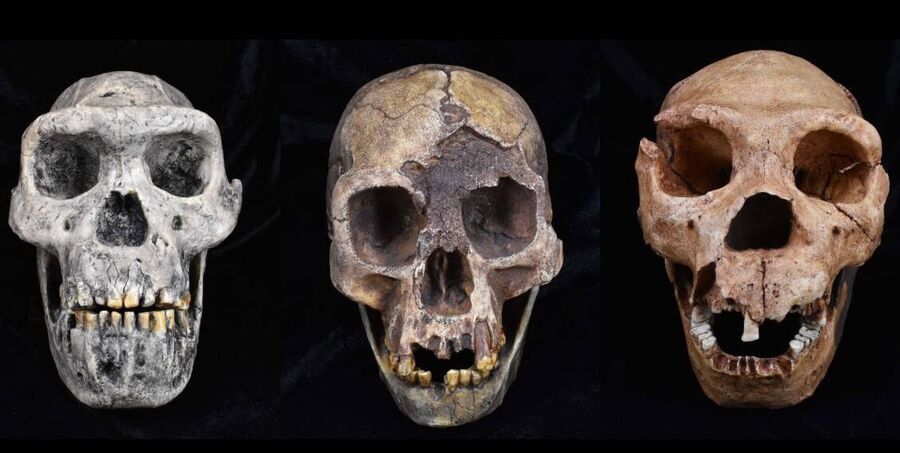
© Duckworth Laboratory, University of Cambridge.Cast of Homo erectus, Homo floresiensis and Homo heidelbergensis skulls.
For years, scientists assumed the main driver of the rise and fall of hominin species (which includes humans and our direct ancestors) was climate change. It is known, however, that interspecies competition is also at play as it is in most vertebrates.
New research published in Nature Ecology & Evolution examines the rate at which new species of hominin emerged over 5 million years. This speciation in our lineage, they found, is unlike almost anything else.
"We have been ignoring the way competition between species has shaped our own evolutionary tree," says lead author Dr Laura van Holstein from the University of Cambridge, UK. "The effect of climate on hominin species is only part of the story."
In most vertebrates, species evolve to fill ecological "niches."
"The pattern we see across many early hominins is similar to all other mammals," van Holstein says. "Speciation rates increase and then flatline, at which point extinction rates start to increase. This suggests that interspecies competition was a major evolutionary factor."
But van Holstein describes as "bizarre" the evolution of the group Homo which includes modern humans and emerged about 2 million years ago with Homo habilis.
The trend of speciation was completely reversed.
"The more species of Homo there were, the higher the rate of speciation. So, when those niches got filled, something drove even more species to emerge. This is almost unparalleled in evolutionary science."
The closest comparison is in beetle species living on islands where contained ecosystems can produce unusual evolutionary trends.
"The patterns of evolution we see across species of Homo that led directly to modern humans is closer to those of island-dwelling beetles than other primates, or even any other mammal," van Holstein explains.
Van Holstein created a database of every hominin species to be found and dated so far: 385 records in total.
She sought to overcome the incompleteness of the fossil record through modelling. This gave her new timelines of when species emerged and disappeared.
Comment: Indeed: Most human origins theories are not compatible with known fossils
Among van Holstein's findings is that several species thought to have evolved through anagenesis - when one species slowly turns into another - might actually have "budded," meaning the new species branched off the existing one.
For example, the hominin species Australopithecus afarensis was believed to have evolved from Australopithecus anamensis through anagenesis. But the model suggests they overlapped by about half a million years.
Early hominins may have evolved to expand their niche. For example, Paranthropus might have adapted their teeth to consume different foods. But the pattern in Homo species suggests that technology played a far greater role in speciation.
Comment: Notably, animals have been observed using tools to a limited extent: Pigs recorded using tools for the first time
"Adoption of stone tools or fire, or intensive hunting techniques, are extremely flexible behaviours. A species that can harness them can quickly carve out new niches and doesn't have to survive vast tracts of time while evolving new body plans," van Holstein explains.
Source link

